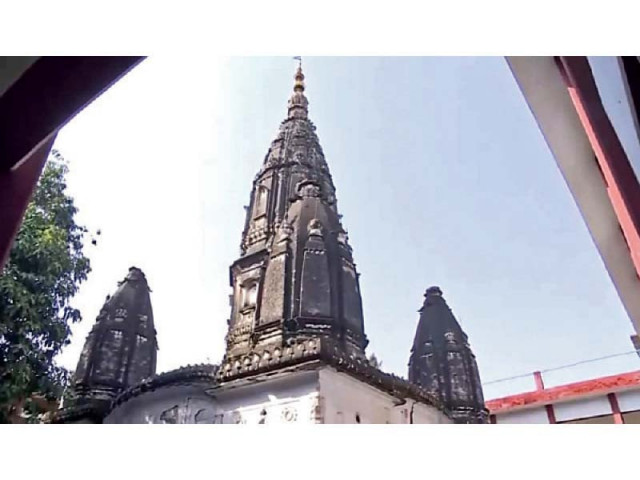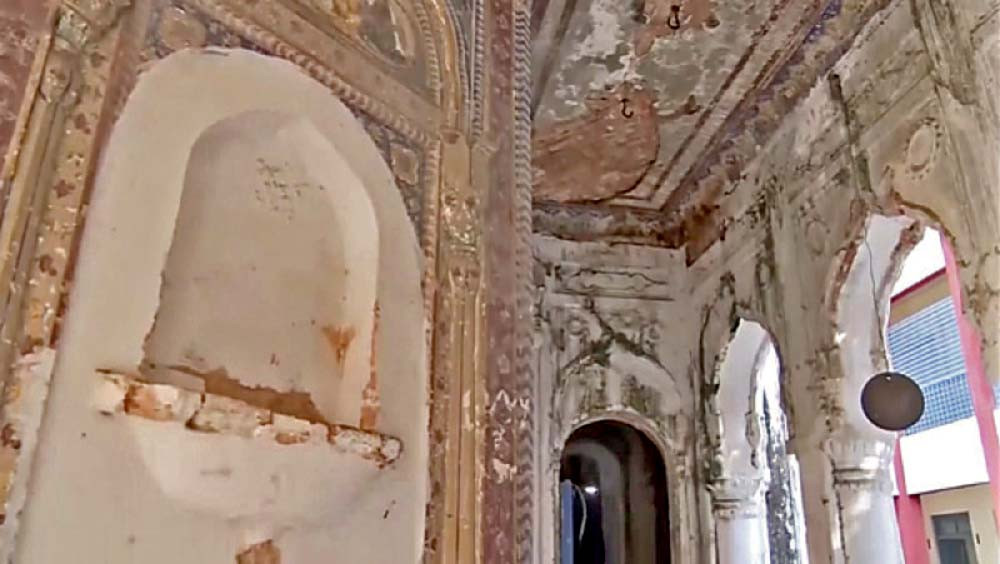150-year-old Kalyan Das temple in a shambles
Lack of maintenance puts magnificent architectural piece in a state of decay

In the middle of Rawalpindi’s Kohati Bazaar, one can see the dome of a temple which is almost hidden by the high walls of a school for visually-impaired children. Here stands one of the stunning and historical landmarks of the city: Kalyan Das temple.
The 150-year-old temple is in a state of utter neglect due to lack of maintenance.
The temple was named after a generous resident of Rawalpindi, Kalyan Das, who laid its foundation stone in the 1850s, and as confirmed by the board, which said it was completed in 1880.
Like many other temples of the city, during the partition, the Kalyan Das temple was also left abandoned as the Hindu population left the city. Today this magnificent architectural piece still stands tall but the complex it is in is a state of decay.
Outside this building, one can see the board of Government Qandeel Secondary School for visually impaired children. On entering the main gate of the school, one is confronted with the sight of a magnificent architectural form that stands right in the middle of the school courtyard.

Muhammad Azeem, who has been visiting the city for the last 50 years, said that the Kalyan Das temple is still very important for the Hindu community. Every year from March to June, Hindu pilgrims from India come here, he said.
The condition of the temple is in a shambles and pilgrims cannot worship in it but they just sit under its shadow, he said adding that the Hindu pilgrims eat in the courtyard and watch the temple in utter silence.
Azeem said that Hindu pilgrims on their way back also pick up the sand from the temple walls and take it with them to India, which they consider religiously important.
“Our elders used to say that this temple was built by the Suri family 150 years ago. At that time, the total area of this temple was seven acres. There were gardens in this temple and there was a pool and other facilities for performing Ashnan and other religious rituals,” he said.
For some time, he said, after the partition, the protection of the temple was undertaken by the Indian Arora family, who used to renovate and repair its main terraces, corridors and stairs. This temple has not been maintained for a long time now, he said.
Humair, a visually-impaired student of the school, said that the teachers tell them about the history of this temple. “We cannot see this temple but all we know about this temple is that it has three big minarets, porches and corridors. The rooms where Hindus used to worship have been kept closed. There are no idols in this temple now but this temple is still very important for Hindus,” he said.
Muhammad Hussain, 70, who lives near the Kalyan Das temple, said he used to play in the temple courtyard as a child. “There were large fields around this temple. Time has passed, now this temple is surrounded by a dense population,” he said.
This temple is an epitome and an example of historical architecture. Although no maintenance of the temple has been carried out for the last several decades, the main structure of the temple still stands tall with its all grandeur.
The Auqaf department is responsible for its maintenance but it has not released funds for the protection and restoration of the historical heritage.
Published in The Express Tribune, March 25th, 2022.



















COMMENTS
Comments are moderated and generally will be posted if they are on-topic and not abusive.
For more information, please see our Comments FAQ